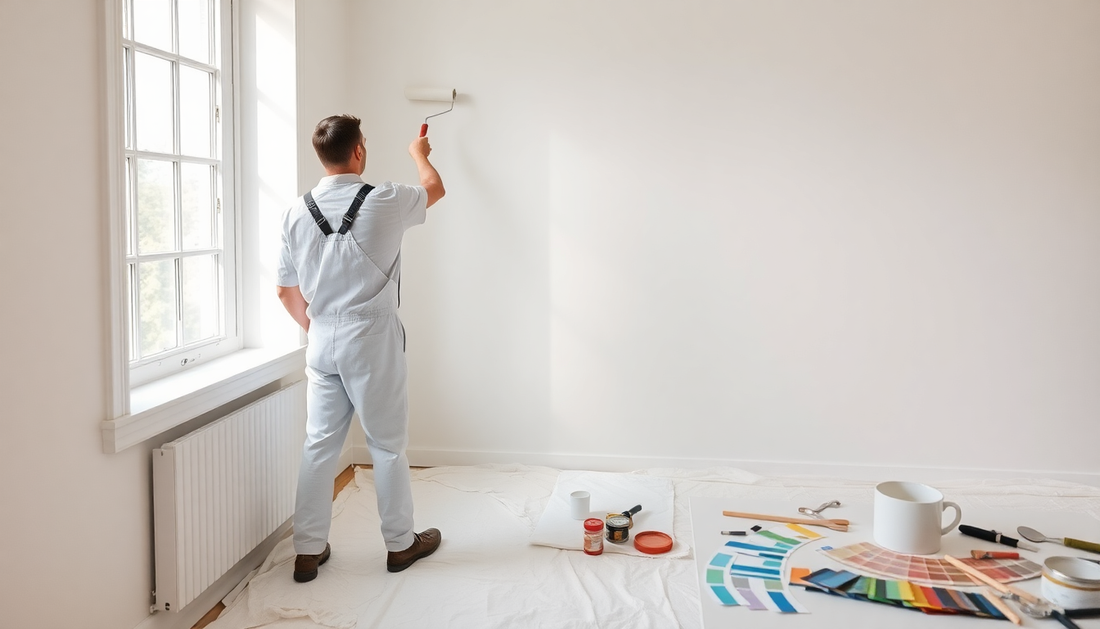
5 Essential Steps to Painting a Room Like a Pro
Share
Painting a room can be a daunting task, but with the right preparation and techniques, you can achieve professional-looking results. Whether you're refreshing an existing space or transforming a room entirely, these five essential steps will guide you through the process and help you create a beautiful, long-lasting finish.
Prepare the Room
The first step to a successful painting project is proper preparation. Begin by clearing the room of any furniture, artwork, or decorative items. Cover the floor with a drop cloth or plastic sheeting to protect it from paint drips and splatters. Use painter's tape to carefully mask off any trim, baseboards, or other surfaces you don't want painted.
Next, inspect the walls for any cracks, holes, or imperfections, and address them with a suitable filler or spackle. Once the filler has dried, lightly sand the area to ensure a smooth surface. This step is crucial, as it will help create a seamless finish once the paint is applied.
Choose the Right Paint
Selecting the right paint for your project is essential. Consider the room's purpose, the desired finish (matte, eggshell, or satin), and the paint's durability. For high-traffic areas like hallways or children's rooms, opt for a more durable, scrubbable paint. In contrast, bedrooms and living rooms may benefit from a softer, more matte finish.
When choosing a color, take into account the room's natural lighting and the overall aesthetic you're trying to achieve. Paint samples on the wall and observe how the color changes throughout the day to ensure it's the perfect fit.
Properly Prime the Walls
Priming the walls is a crucial step that is often overlooked, but it can make a significant difference in the final result. A good primer will help the paint adhere better, provide better coverage, and create a more uniform finish.
If you're painting over a dark color or a heavily stained wall, use a stain-blocking primer to prevent the old color from bleeding through. For new drywall or patched areas, a universal primer will help create a smooth, even surface for the topcoat.
Apply the Paint Methodically
When it comes to applying the paint, take your time and work in a methodical manner. Start by cutting in the edges with a high-quality angled brush, carefully painting along the trim, corners, and edges. This will help you achieve a clean, professional-looking finish.
Next, use a paint roller to cover the larger wall areas. Work in sections, applying the paint in a "W" or "M" pattern to ensure even coverage. Be sure to overlap each stroke to avoid visible lines or gaps.
If you're applying a second coat, wait for the first coat to fully dry before proceeding. This will help the paint adhere properly and prevent any issues with the final finish.
Clean Up and Maintain
Once you've completed the painting process, it's time to clean up. Carefully remove the painter's tape, being mindful not to pull off any of the fresh paint. Dispose of any used drop cloths or painting supplies, and thoroughly clean your brushes and rollers to ensure they're ready for your next project.
Finally, take the time to maintain your freshly painted walls. Avoid hanging heavy artwork or furniture for at least a week, allowing the paint to fully cure. When it comes to cleaning, use a soft cloth and a mild detergent to wipe away any dirt or smudges, being careful not to scrub too vigorously.
By following these five essential steps, you'll be well on your way to achieving a professional-looking paint job that will transform your space and enhance the overall aesthetic of your home.
Conclusion
Painting a room can be a rewarding and satisfying DIY project, but it requires careful planning and attention to detail. By following these five essential steps - preparing the room, choosing the right paint, priming the walls, applying the paint methodically, and properly cleaning up and maintaining the finish - you can achieve a beautiful, long-lasting result that will impress both you and your guests.
Remember, the key to a successful painting project is taking the time to do it right. With a little patience and the right techniques, you can transform any room in your home and create a space that you'll love for years to come.